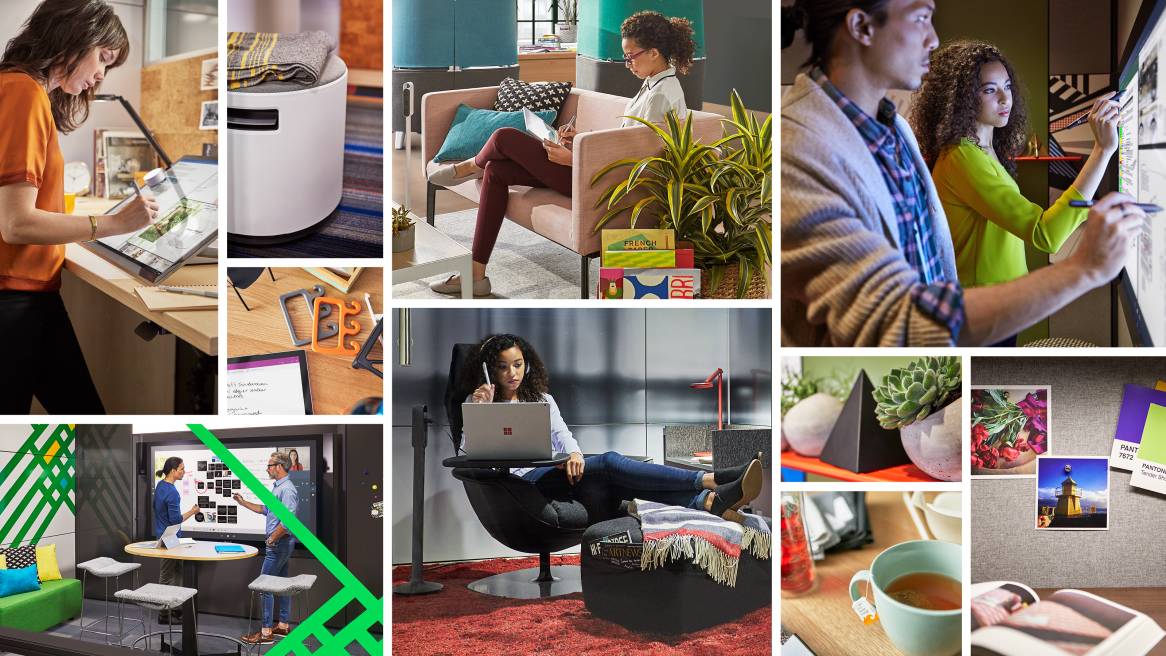Microsoft and Steelcase Partner to Boost Creative Work
Steelcase and Microsoft introduce Creative Spaces — a range of places and technologies to enable the creative process.
The future needs creative thinkers. We face global issues that require all of us to unleash our creative potential to solve problems, make new connections and generate ideas. Creativity is not only the domain of artists and musicians. It is a process in which we all can engage and all need to encourage. That’s one reason why Steelcase and Microsoft announced a partnership today to help people enhance these critical behaviors at work. The two companies are introducing Creative Spaces, a jointly developed range of technology-enabled work spaces designed to foster creative thinking at work.
Creativity is a critical 21st century job skill driven by organizations’ need for innovation and growth, and employees’ desire for more meaningful work, according to research conducted by the two companies. Yet, despite the desire to harness creativity, many organizations don’t think about their investments in technology and space holistically. The result: The conditions for creativity at work are often not optimal.
Explore Creative Spaces and the Microsoft and Steelcase partnership.
Former Steelcase CEO Jim Keane shares how people are at the center of this new partnership.
Joint research released today by the two companies reveals the pressure people feel about the shift toward more creative work:
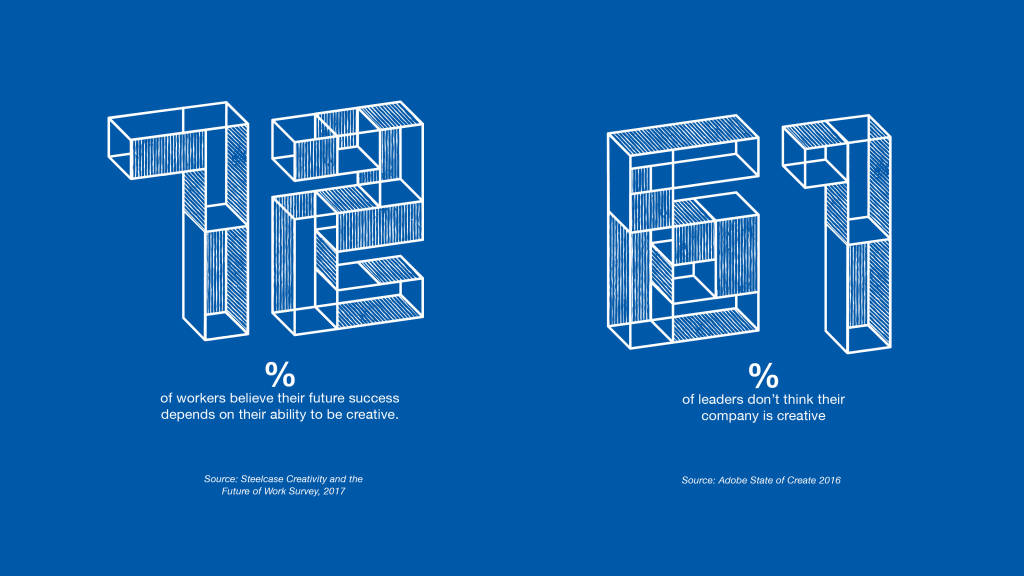
There is greater need to collaborate, yet only 25% of respondents feel they can be creative in the places they currently have available for group work.
The study also reveals the connection between creativity and privacy, as employees ranked having a place to work without disruption as the second highest factor that could improve creativity, just behind the need for more time to think.
“The problems we face at work today are much more complex than they used to be. They require a new creative way of thinking and a very different work process,” says Sara Armbruster, vice president of strategy, research and new business innovation for Steelcase. “We believe that everyone has the capacity for creative thinking and people are happier doing creative, productive work. Together, Microsoft and Steelcase will help organizations thoughtfully integrate place and technology to encourage creative behaviors at work.”
The companies’ joint exploration of creative work found the creativity process requires diverse work modes as well as different types of technology. People need to work alone, in pairs and in different size groups throughout a creative process, and they need a range of devices that are mobile and integrated into the physical workplace. Additionally, spaces should inspire people without compromising performance.
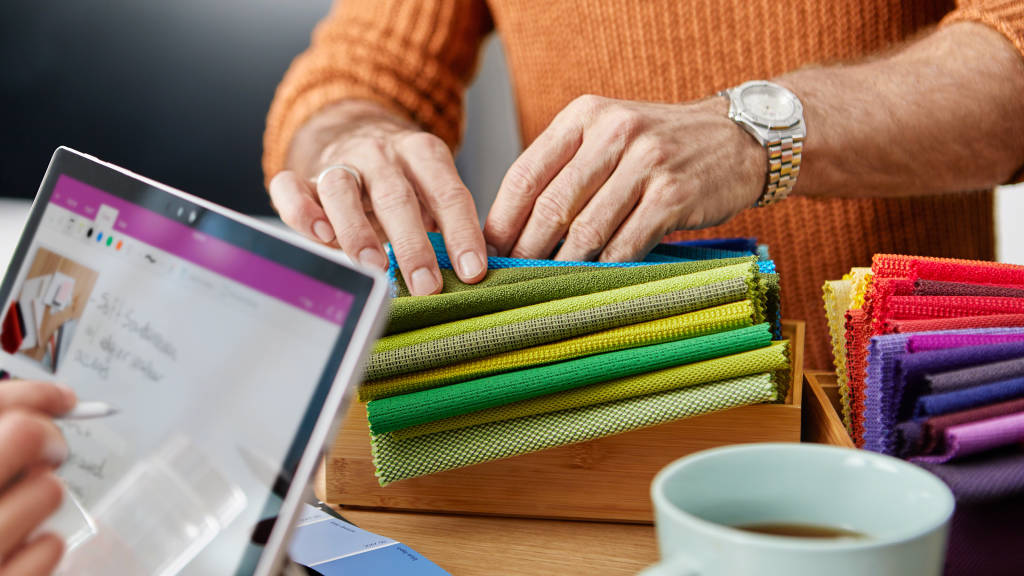
“Every Microsoft Surface device strives to enable the creator in each of us.”
Ryan GavinGeneral Manager, Microsoft Surface
“Every Microsoft Surface device strives to enable the creator in each of us. Devices like Surface Studio and Surface Hub are fundamentally designed around how people naturally create, connect and collaborate.” says Ryan Gavin, general manager, Microsoft Surface. “With Steelcase, we have the compelling opportunity to blend place and technology into a seamless setting that allows our most important assets, people, unlock their creativity and share that with others. This is the modern workplace.”
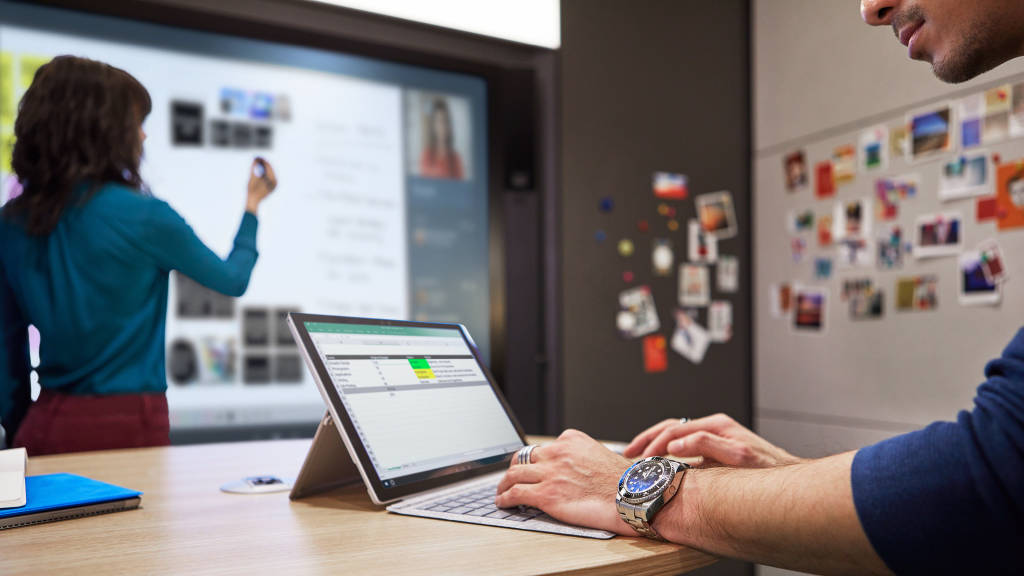
“Creative Spaces were clearly designed to bridge the current gap between place and technology and to help creative work happen more naturally.”
Bob O’DonnellPresident, Founder and Chief Analyst at TECHnalysis Research
“Most employees are still working with outdated technology and in places that are rooted in the past, which makes it difficult for them to work in new, creative ways,” said Bob O’Donnell, president, founder and chief analyst at TECHnalysis Research. “Creative Spaces were clearly designed to bridge the current gap between place and technology and to help creative work happen more naturally.”
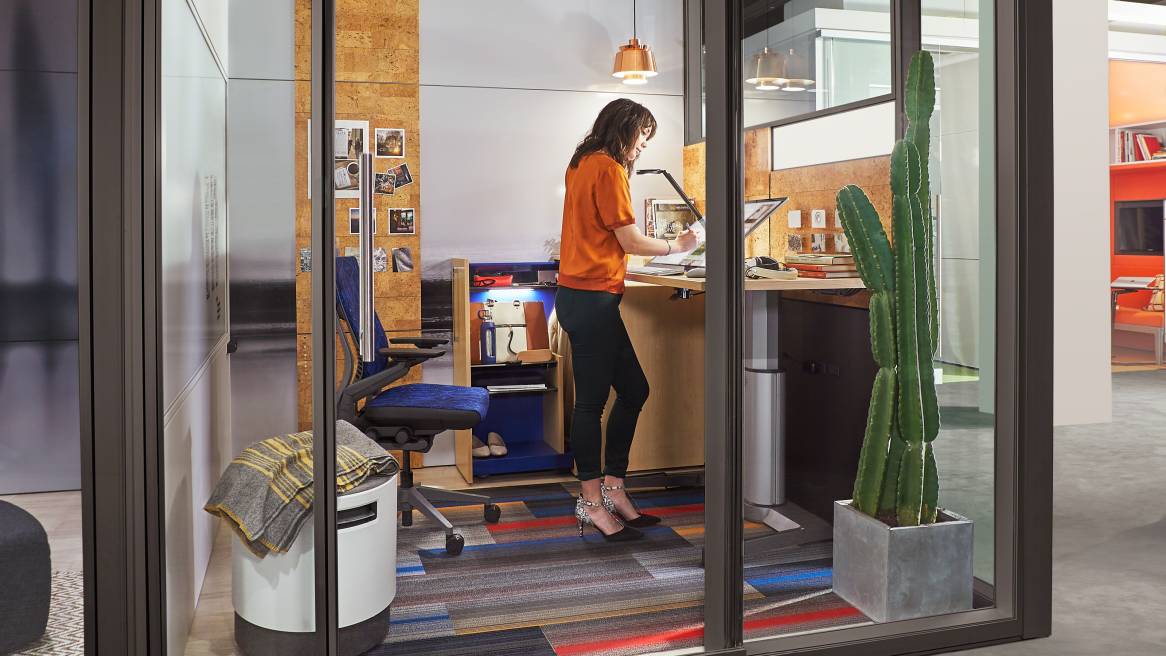
As part of the ongoing relationship, Steelcase and Microsoft are also developing technology-enabled office solutions, based on IoT (Internet of Things) technology that provide data to help organizations measure and improve their workplaces, and help employees find the best places to do diverse types of work within the office.
Additionally, select Steelcase dealers in the U.S. and Canada will resell the Microsoft Surface Hub™ as a part of the Microsoft partner network. In late 2017, additional dealers in Europe will become licensed to resell the Surface Hub™. As the spaces roll out in the Americas, Europe and Asia Pacific, the range of spaces will continue to be expanded and evolve.
“We are facing a time of unprecedented change at work. Through this partnership we will bring together space and technology to help workers and organizations solve the workplace challenges they face today and in the future and ultimately perform their best at work,” explains Armbruster.
Explore Creative Spaces and the Microsoft and Steelcase partnership.
*Joint research by Microsoft and Steelcase released March 6, 2017 of 515 US and Canadian companies with 100+ employees.

